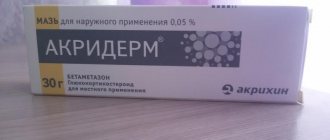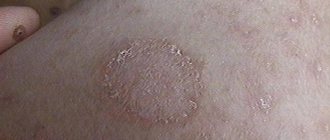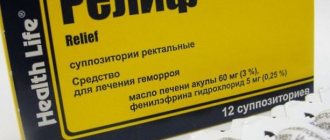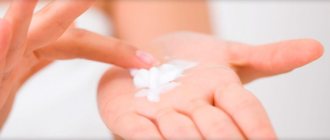Salicyl - features of the drug and its production
The basis of salicylic ointment is salicyl. It is a histamine and broad-spectrum antibacterial agent. The ointment has a uniform white consistency. Purified Vaseline is added to the ointment as an auxiliary drug. It evenly distributes salicylic particles, which allows you to achieve the same concentration in any area.
In medicine, salicylic-zinc ointment is isolated separately. In addition to salicylic acid, it contains zinc oxide, about the healing properties of which you can read here. The drug has the consistency of a paste. The instructions for salicylic-zinc ointment indicate therapeutic properties that have certain differences from salicylic ointment. Zinc is an adsorbent that dries the skin. This drug is indispensable in the presence of exudative processes.
Salicylic-zinc ointment can be used after examination and recommendations of a dermatologist. It is not recommended to use the drug for pregnant, nursing mothers, children
The advantages of salicylic ointment are difficult to overestimate. The drug was first synthesized by the German scientist Kolbe in 1860. Initially, the ointment was used as an effective means of combating rheumatism. With the advent of medical antirheumatic drugs on the market, salicylic ointment began to be used to treat external ailments.
Important. Salicylic ointment should not be combined with other antibiotics. Exceptions are made on the recommendations of the attending physician.
Contraindications for use
Salicylic ointment should be used carefully. Do not exceed the dosage; the acid penetrates into the blood in proportion to the strength of inflammation, causing allergies.
Contraindications:
- Skin formations such as moles on the face and genitals;
- Pregnancy;
- Presence of resorcinol-containing drugs or zinc oxide;
- Use of hypoglycemic drugs, sulfonylureas and Metrotrexate;
- Children under 4 years old;
- Kidney failure;
- Individual intolerance.
Therapeutic effect of salicylic acid
The use of salicylic ointment helps to destroy pathogenic microorganisms. Inflammatory processes decrease, pustules and inflammations decrease and after a while disappear completely. The drug has a preventive effect and prevents the formation of new inflammations on the skin. In medicine, the main therapeutic effects of a drug are called:
- Antiseptic: aimed at destroying bacteria, preventing their decomposition;
- Anti-inflammatory: reduces pain, itching, discomfort, aims to inhibit and reduce the level of bacteria;
- Keratolytic: aimed at ridding the skin of dead cells, providing an antiparasitic and softening effect on the stratum corneum;
- Reducing sweat secretions: stabilizing the functioning of the sebaceous glands;
- Antiseborrheic effect: aimed at eliminating seborrhea, reducing the production of epidermal secretions, reducing inflammatory reactions.
Salicylic ointment against acne significantly improves the condition of the skin. It is recommended for use for the following skin problems:
- Infectious and inflammatory diseases of the skin (the list of such diseases includes chronic eczema, ichthyosis, oily seborrhea, psoriasis, dyskeratosis, pyoderma);
- Cuts, burns and other violations of the integrity of the skin;
- Acne, purulent inflammation, pimples;
- Warts and papillomas;
- Diaper rash and skin irritation;
- Calluses and corns.
Salicylic ointment must be in your home medicine cabinet. The drug has a wide spectrum of action. But before you start using it, you should find out the features of 2, 5 and 10 percent salicylic ointment.
Features of salicylic ointment 2 percent
Salicylic ointment 2 percent is an effective medication that is used in the treatment of acne, calluses, warts, and psoriasis. The product allows you to quickly get rid of acne, so dermatologists recommend using it as a treatment for problem skin. Cosmetologists advise using several recipes:
- Combine salicylic ointment with night cream in a 1:1 ratio. During the first seven days, the cream is applied pointwise to the inflamed areas every evening before resting at night. Then the cream is used as a prophylaxis - 2 - 3 times a week. This product is ideal for treating skin prone to excessive dryness;
- Salicylic, zinc ointments and Bepanten cream are mixed in equal proportions. The resulting mixture should be applied to the inflamed areas of the skin in a thin layer;
Salicylic ointment has a drying effect, so it is not recommended for use on sensitive skin.
- When treating calluses and corns, you should mix salicylic ointment with Vaseline.
You should immediately stop using the drug if itching occurs, the skin turns red or begins to peel, or irritation appears.
Summary of the ointment
Salicylic ointment, the instructions for use of which contain all the necessary information about this product, is used everywhere. This drug can be used to treat diseases of an inflammatory and infectious nature. In addition, dermatologists recommend treating various burns, calluses and even eczema with the composition.
For the treatment of a phenomenon such as acne, it is best to use a two percent remedy. It is best to take the medicine at night, before going to bed. To enhance the therapeutic effect, you can mix salicylic ointment, zinc cream and a medication such as Bepanten. In the first week of treatment, the product should be used to treat problem areas daily. When the problem is resolved, you can use the product only twice during the week.
When carrying out therapy using this product, remember that the medication has an exfoliating effect. This effect of this remedy does not allow the use of the ointment for a long time. In some cases, long-term use of the medicine can cause dry skin. Particular care is needed when treating various pathologies if you have sensitive skin.
Salicylic ointment in combination with external zinc-based products is used to treat many skin diseases. But using the product on your own is not recommended. It is best to first undergo an examination by a dermatologist in order to identify the cause of the pathology.
For the treatment and prevention of diseases such as eczema, seborrhea and psoriasis, the specialist recommends the use of a two percent composition. This composition of salicylic ointment has a milder effect. For delicate skin, you can soften the exfoliating effect by mixing the medicine with Vaseline. This mixture can also be purchased at the pharmacy, it is called sulfur-salicylic ointment. This ointment has a wide range of medicinal effects and is used for various dermatological pathologies.
The five percent composition is recommended for the treatment of thermal burns. The medicine should be applied only to the affected areas, in a small layer. This composition allows you to speed up healing and eliminate pain symptoms.
To remove warts, a sixty percent concentration of this product is used. The properties of salicylic ointment with such a concentration of the active substance allows it to accelerate the penetration of the composition into the very center of the lesion. When treating warts, calluses and other types of skin growths, the course of treatment is carried out until the problem of concern is completely eliminated. But remember that the maximum duration of the course can only be three weeks.
The pathologies discussed above are not the entire list of diseases for which salicylic ointment is used. Indications for the use of salicylic ointment, indicated in the annotation, contain the entire detailed list of pathologies for which this remedy can be used.
When it becomes clear in what cases the ointment is used, it’s time to consider how to do it correctly. Before you start applying the composition, the affected area must be pre-treated. Treatment involves getting rid of scales and crusts. After this, the wound is treated with an antiseptic solution and ointment is applied. When treating blisters, burns and purulent rashes, the blisters are opened before applying the ointment. After this, an antiseptic and the product itself are applied to the damaged area.
It is best to apply the ointment in a thin, translucent layer. After application, place a sterile napkin and a fixing bandage over the treated area. In cases where the wounds are accompanied by acute pain when touched, you can use a sterile piece of gauze or bandage on which the product itself is applied. The bandage with the medicine needs to be changed every day.
Today, salicylic ointment is available with acid concentrations of 1%, 2%, 3% or 5%
Features of salicylic ointment 5 percent
Salicylic ointment 5 percent for the treatment of acne is used with great caution. It has a potent effect that can negatively affect the skin. Peeling, red spots or itching may occur.
Dermatologists recommend using a 5 percent version of the ointment in case of combating chronic eczema, purulent pimples, acne, and pilaris. The drug inhibits the secretion of sebaceous and sweat glands and has a distracting effect:
- The ointment opens and cleanses clogged pores;
- Blood flow to skin cells is restored, natural processes in the epidermis are stabilized;
- Destroys pathogenic bacteria and microbes and prevents their spread.
How to use salicylic ointment
Despite the versatility of the drug, the use of salicylic ointment for acne has a number of features that are important to study before use.
Use as a medicinal impregnation
A gauze pad is soaked in salicylic ointment. Apply to the inflamed area of skin for several hours (recommended overnight). Secure the bandage with adhesive tape.
Applying ointment to pimples
Salicylic ointment is applied pointwise to inflamed pimples 4 to 5 times a day. It is not recommended to apply the drug to healthy skin; peeling may occur. The ointment does not need to be rubbed in; it is quickly absorbed by itself. It is worth considering the fact that Vaseline leaves greasy marks on the skin. The course of treatment for acne and pimples ranges from 7 to 21 days.
Combination of salicylic ointment with medicinal plants
A mixture of salicylic ointment with infusions of medicinal plants will help not only improve the health of the skin, but also fill it with nutrients and moisturize it as much as possible. Before applying the ointment, wipe the face with an infusion prepared from chamomile, nettle, sage, St. John's wort and other herbs.
Combination of salicylic ointment with green clay
Recipe for treating acne on combination skin. 2 tbsp. l. Dissolve green clay in a small amount of warm water until the consistency of sour cream is obtained. Add 1 tsp to the mixture. salicylic ointment. Apply the mask to your face for 10 – 15 minutes. Then rinse with warm water.
The video demonstrates in detail the features of using salicylic ointment:
Instructions for use
As already mentioned at the very beginning, the ointment was created only for external use, that is, for the skin. If the drug accidentally gets on your mucous membranes or eyes, you should immediately clean the area with plenty of running water.
Usually a doctor prescribes treatment, but sometimes you have to manage it yourself. Therefore, you need to know that the choice of ointment with a particular percentage of salicylic acid depends on the type of disease and the severity of the pathology. We can say that there is a certain principle of choice - the stronger the painful condition, the lower the percentage of acid should be in the drug. And also, the larger the area to be treated, the lower the percentage of ointment we choose.
For example, salicylic ointment with an acid content of 1 or 2% is applied to an open wound or during exacerbation of psoriasis, as well as during active inflammation. When a chronic disease passes into a latent phase, when the inflammatory process decreases, as well as when the wound is partially healed, you can choose a five or three percent ointment. If the area to be treated is larger than 25-100 square centimeters, an ointment with one or two percent acid content is selected.
Typically, the ointment is applied to the affected areas once, twice or three times a day. It can be applied in a thin layer directly to the desired area, or it can be applied to a sterile napkin that is fixed to the wound.
Of course, before applying the ointment or making an application, it is necessary to clean the affected area of dirt, pus and dead cells. Then treat with an antiseptic (potassium permanganate, hydrogen peroxide) or water and apply ointment to the prepared surface.
The duration of treatment is determined in each case individually. It all depends on how quickly a person’s tissue is restored and the wound heals. Full recovery usually takes 6–20 days. However, the instructions for use of the drug indicate the maximum period of its continuous use, which is 28 days. It is allowed to use no more than 2 grams of the drug at a time. Since the ointment, getting into the blood, can cause severe allergies.
It is necessary to especially control the rate of single application of the product in case of open wounds, burns, exacerbations of psoriasis, since in these cases the ointment is not applied to the skin and, accordingly, a larger amount of it will enter the blood. It is not recommended to lubricate moles and similar formations on the face and genitals with this product.










